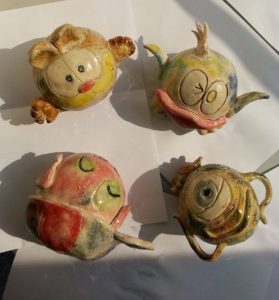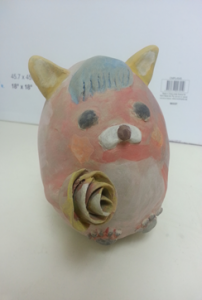By Lisa D. Hinz, Ph.D, ATR-BC | May 25, 2017 | Research
Joshua Kinman Nan, MA. M.Div., Ph.D., ATR is a registered art therapist who lives and works in Hong Kong. He earned his master’s degree in art therapy from Saint Mary-of-the-Woods College in 2010 and his doctorate of philosophy from the University of Hong Kong in 2015.

Kinman Nan’s doctoral research journal article, “Effects of clay art therapy on adults outpatients with Major Depressive Disorders: A randomized controlled trial” has been published in the Journal of Affective Disorders, after five years of intensive clinical investigation, research, and academic writing. With an acceptance rate of only 22%, The Journal of Affective Disorders is one of the most prestigious journals in the field of Clinical Neurology and Psychiatry.
The article, co-authored with Rainbow T.H. Ho, Registered & Board-certified Dance Movement Therapist (BC-DMT) of the American Dance Therapy Association (ADTA); Professor, HKU, is currently available online and will be in print August 2017. Dr. Kinman Nan’s study implemented a randomized control trial involving 106 participants diagnosed with depression and examined the effectiveness of clay as an intervention used in the context of art therapy to address depression.
Using the Expressive Therapies Continuum (ETC), both qualitative and quantitative data demonstrated the therapeutic effects of clay in releasing energy and tension, providing and channeling sensation, evoking emotion, and regulating emotion through the creation of form. Additionally, the clay used in art therapy helped participants develop cognitive skills for increased problem-solving and creating meaningful symbolic forms.
Patients in the clay art therapy (CAT) group, led by a qualified art therapist, demonstrated significant reductions in depression over the visual art (VA) control group that engaged in other, nondirected, leisure activities conducted by social workers. Participants in both groups attended six 2.5-hour weekly sessions. In the case of the CAT group, a qualified art therapist facilitated the art-making process as well as brief discussion and reflection sessions focused on the treatment process. During the visual arts control group, social workers led common recreational activities held at the mental health community centers such as “making handcraft work, coloring mandalas, listening to relaxing music, verbal sharing, or a combination of these activities
Measurements for depressive symptoms, general health, body-mind-spirit well-being, and alexithymia were collected at three intervals: at baseline, immediately post-intervention, and three weeks post-intervention. Multivariate analysis of covariance results indicated that individuals in the CAT group appeared to experience a greater effect over time in the areas of depressive symptoms, general health, body–mind–spirit well-being, and alexithymia (all p < 0.05).
Clay art therapy ranging from perceptual, affective, and more
complex cognitive-symbolic processes in group work setting.
The findings reinforced the benefits of clay art therapy interventions for mental health in community settings. While the long-term effects of such a model could not be confirmed through the six-week timeframe established for this study, the results indicated that even short-term treatment could aid in emotion regulation and improve treatments for depression. Dr. Kinman Nan noted that further research would be valuable in determining CAT’s impact on physical symptomatology and social function.
Dr. Kinman Nan shared his thoughts on reaching publication: “It is very meaningful that the use of clay, art therapy and the ETC in working with mood problems are being brought to the attention of the mainstream medical field through the publication of this article.” This article significantly contributes to the body of literature on the efficacy of art therapy due to the rigor of its study design, which implements a randomized controlled study (RCT) using a large sample size.
Additional randomized controlled studies may found in the Journal of the American Art Therapy Association, which include:
Campbell, M, Decker, K. P., Kruk, K., & Deaver, S. P. (2016). Art Therapy and Cognitive Processing Therapy for Combat-Related PTSD: A Randomized Controlled Trial. Journal of the American Art Therapy Association, 33 (4), 169-177. http://dx.doi.org/10.1080/07421656.2016.1226643
Stinley, N.E., Norris, D.O., & Hinds, P. S. (2015). Creating Mandalas for the Management of Acute Pain Symptoms in Pediatric Patients. Journal of the American Art Therapy Association, 32 (2), 46-53. http://dx.doi.org/10.1080/07421656.2015.1028871



